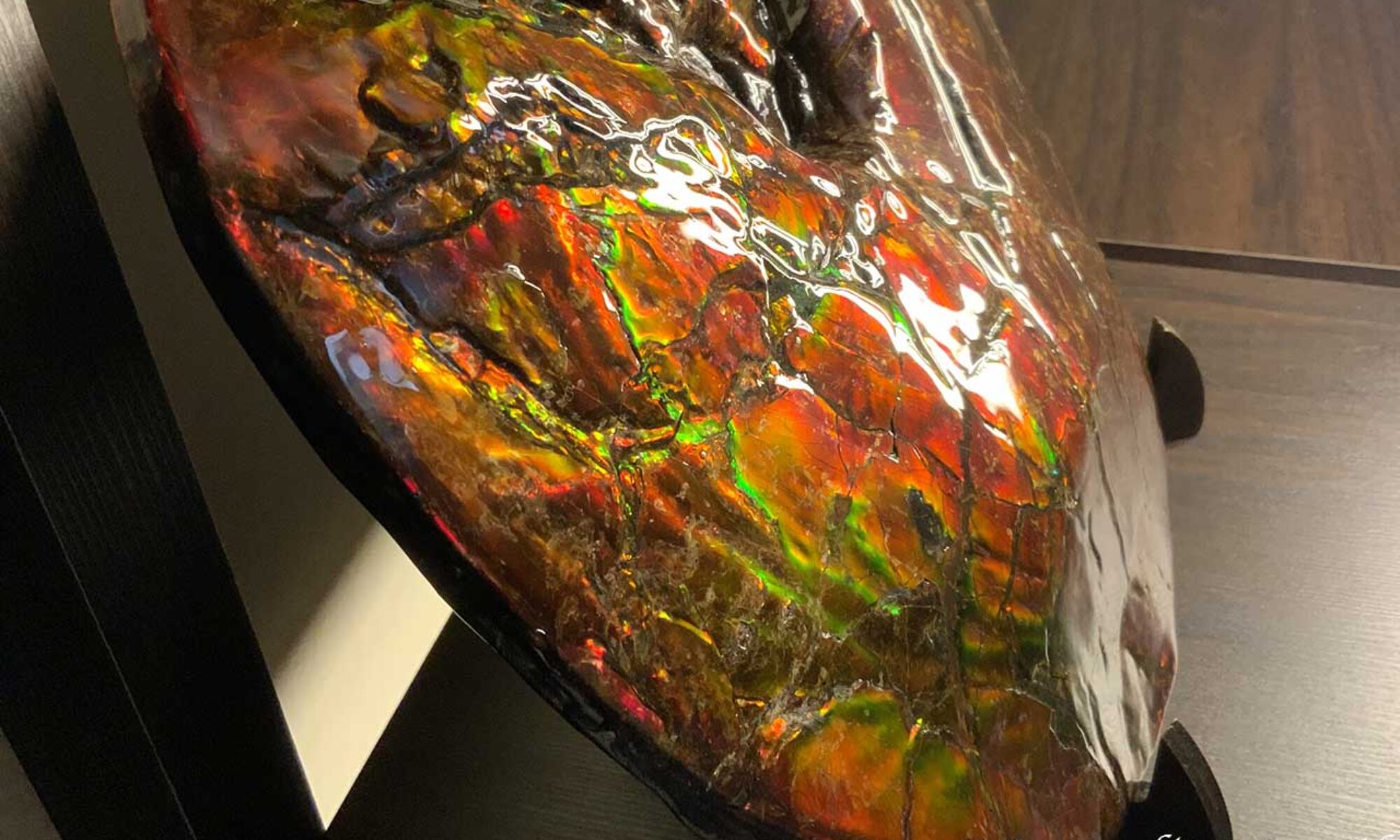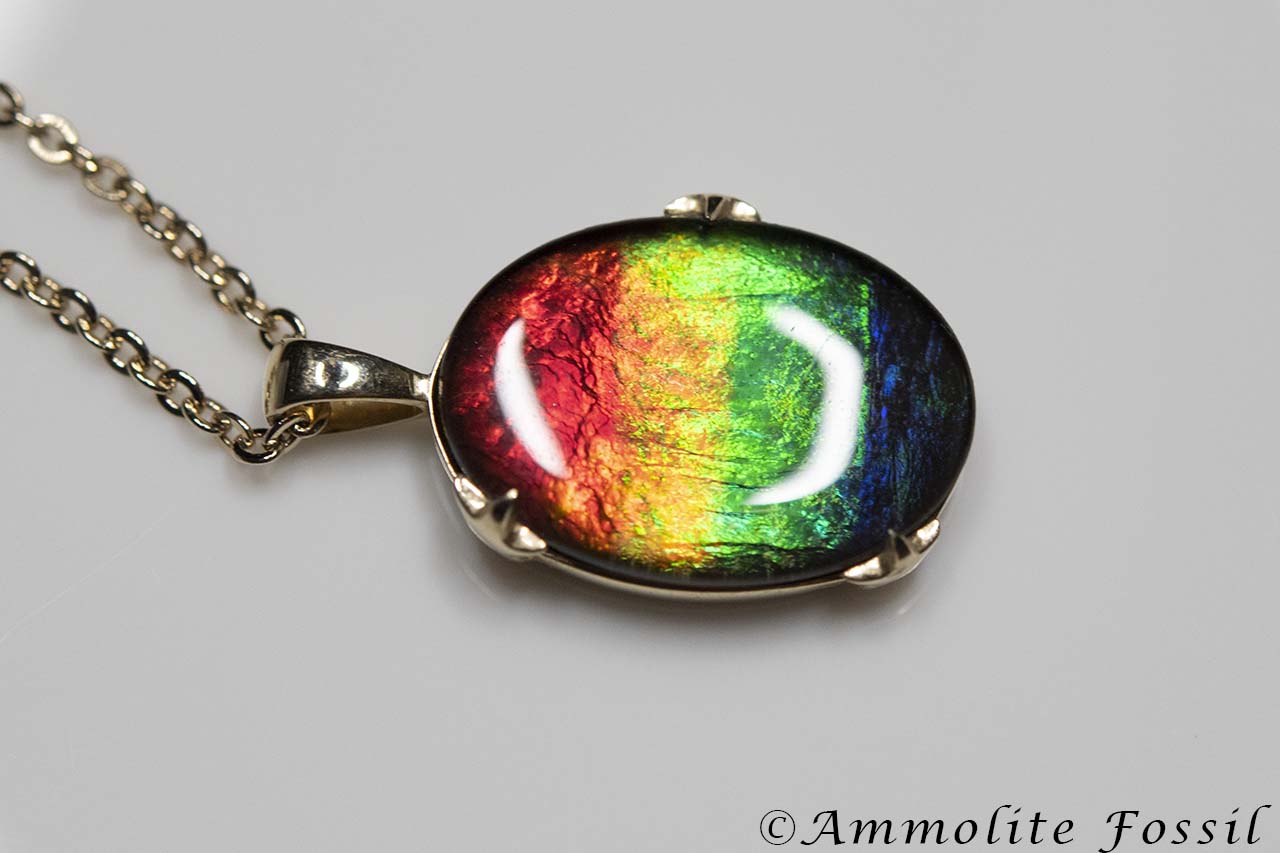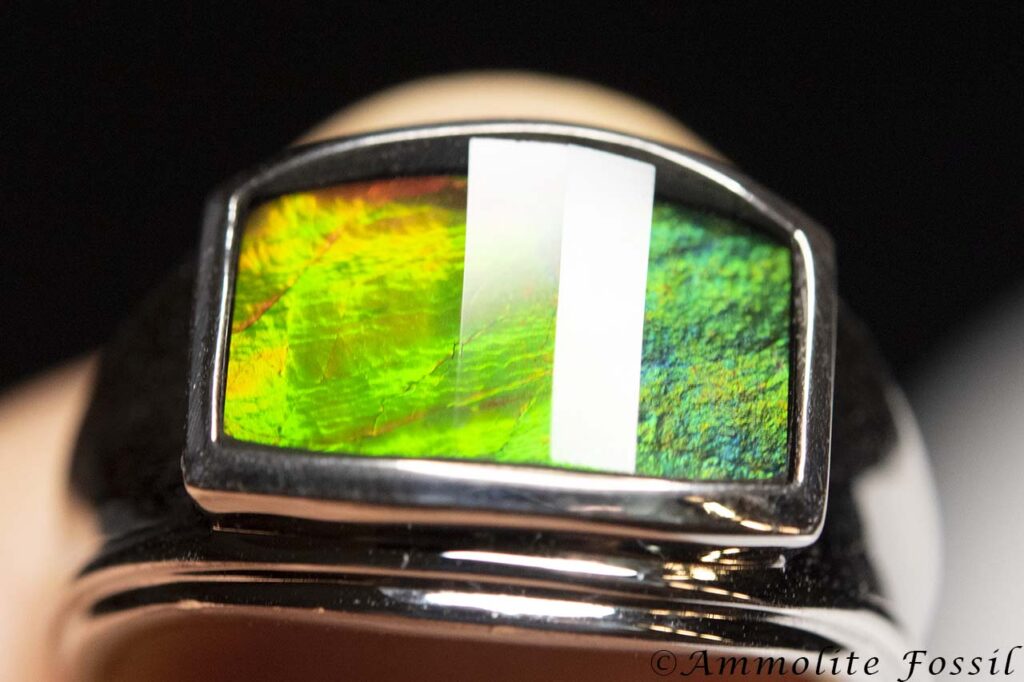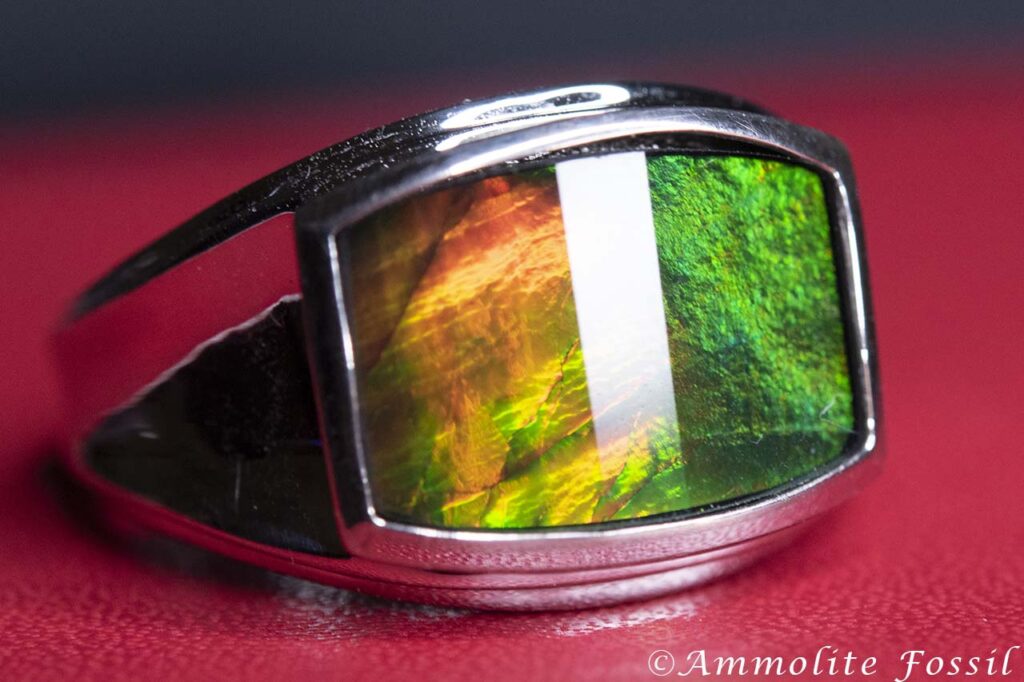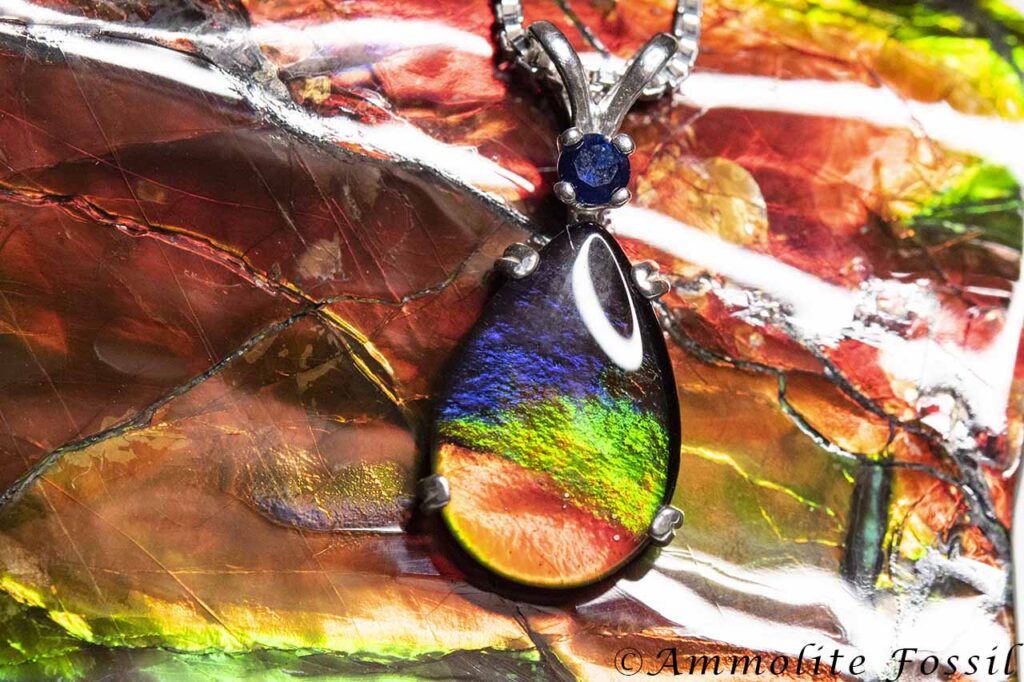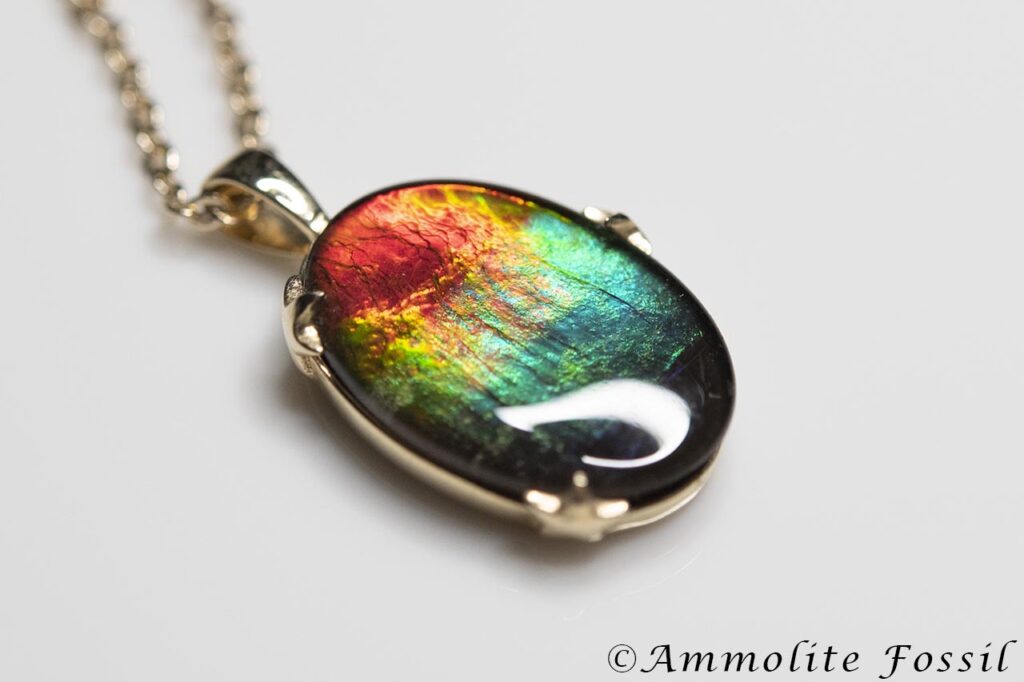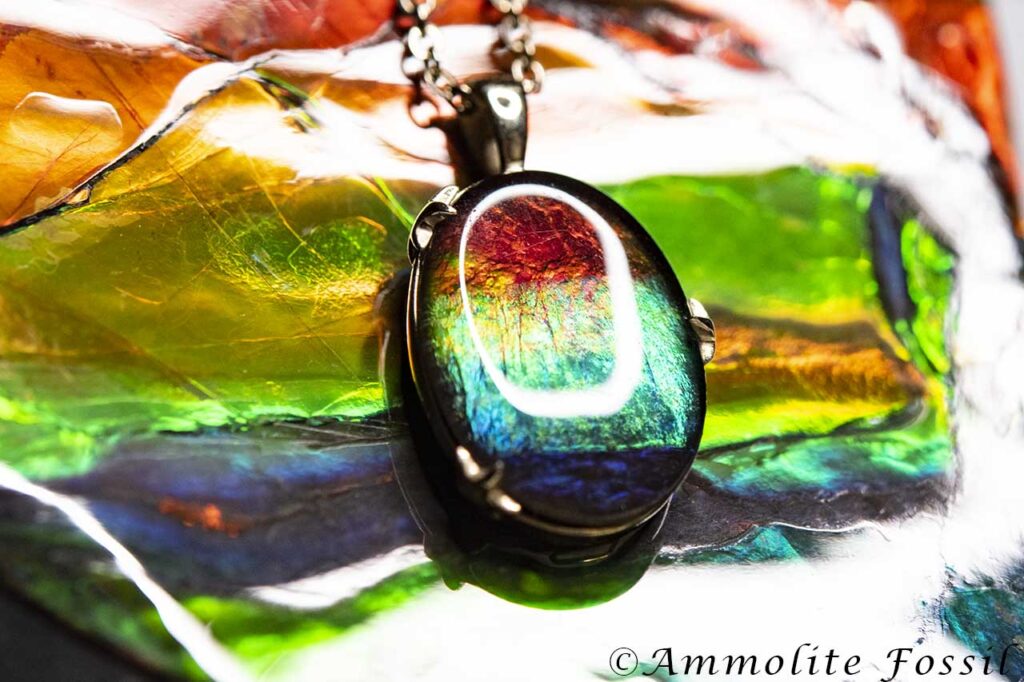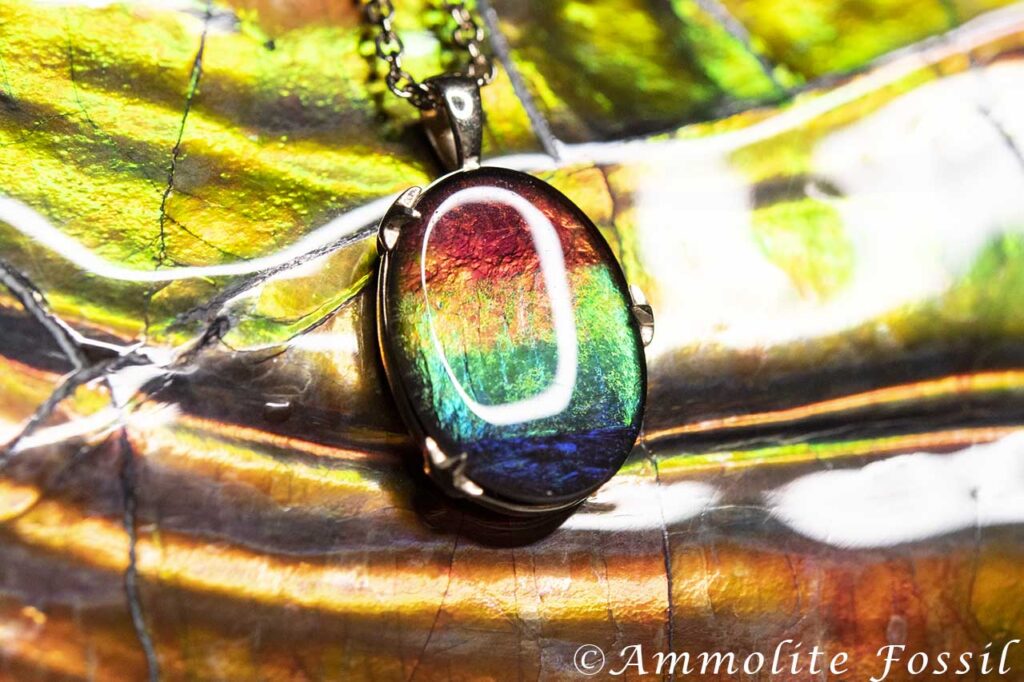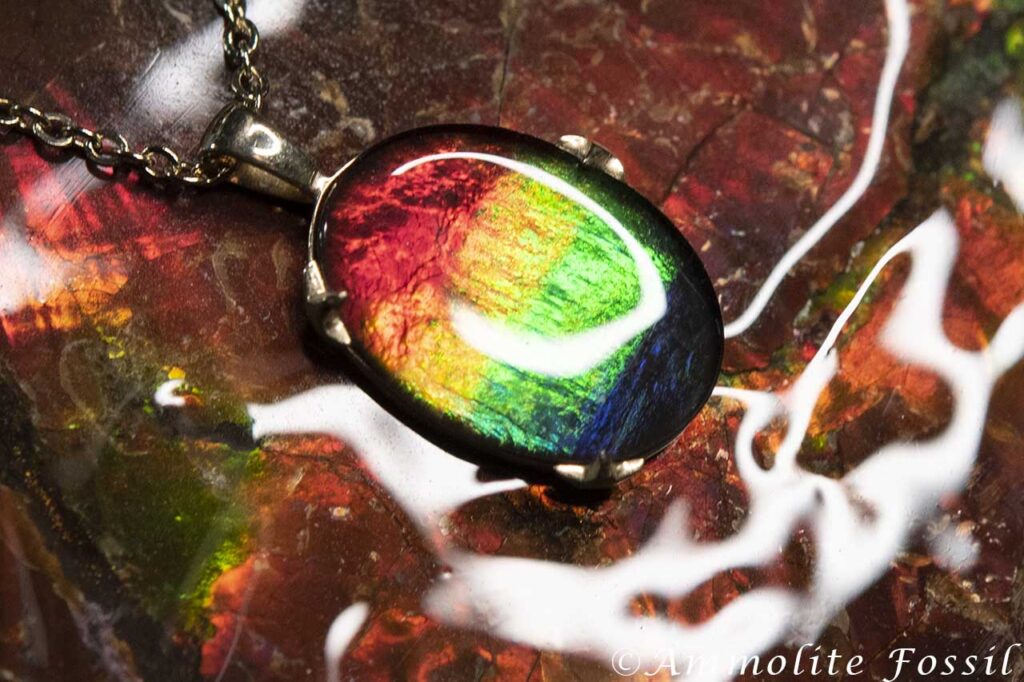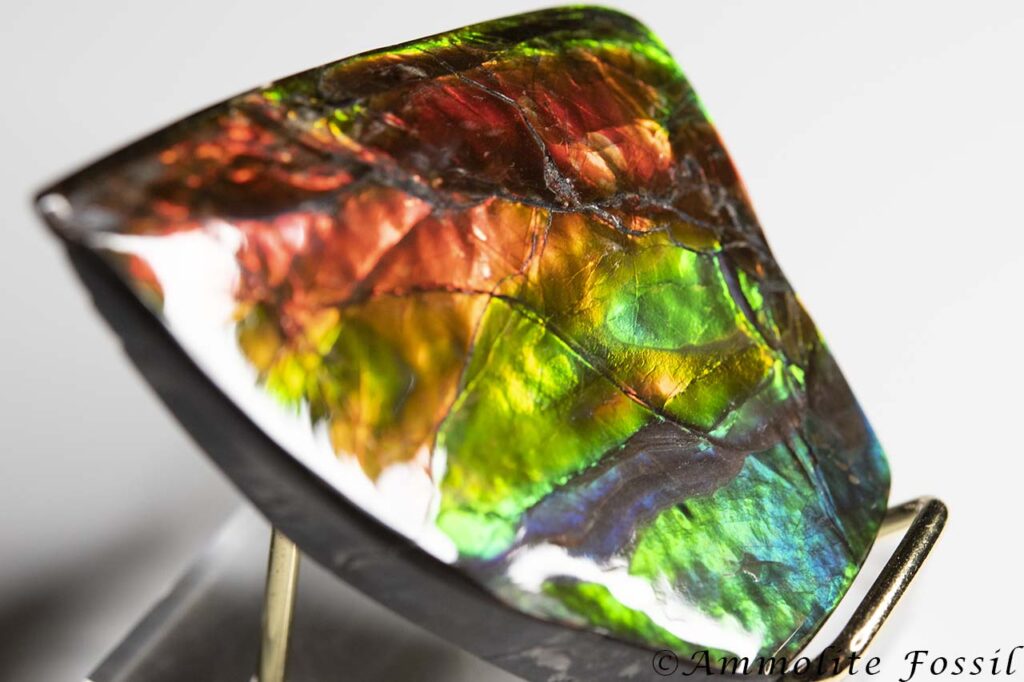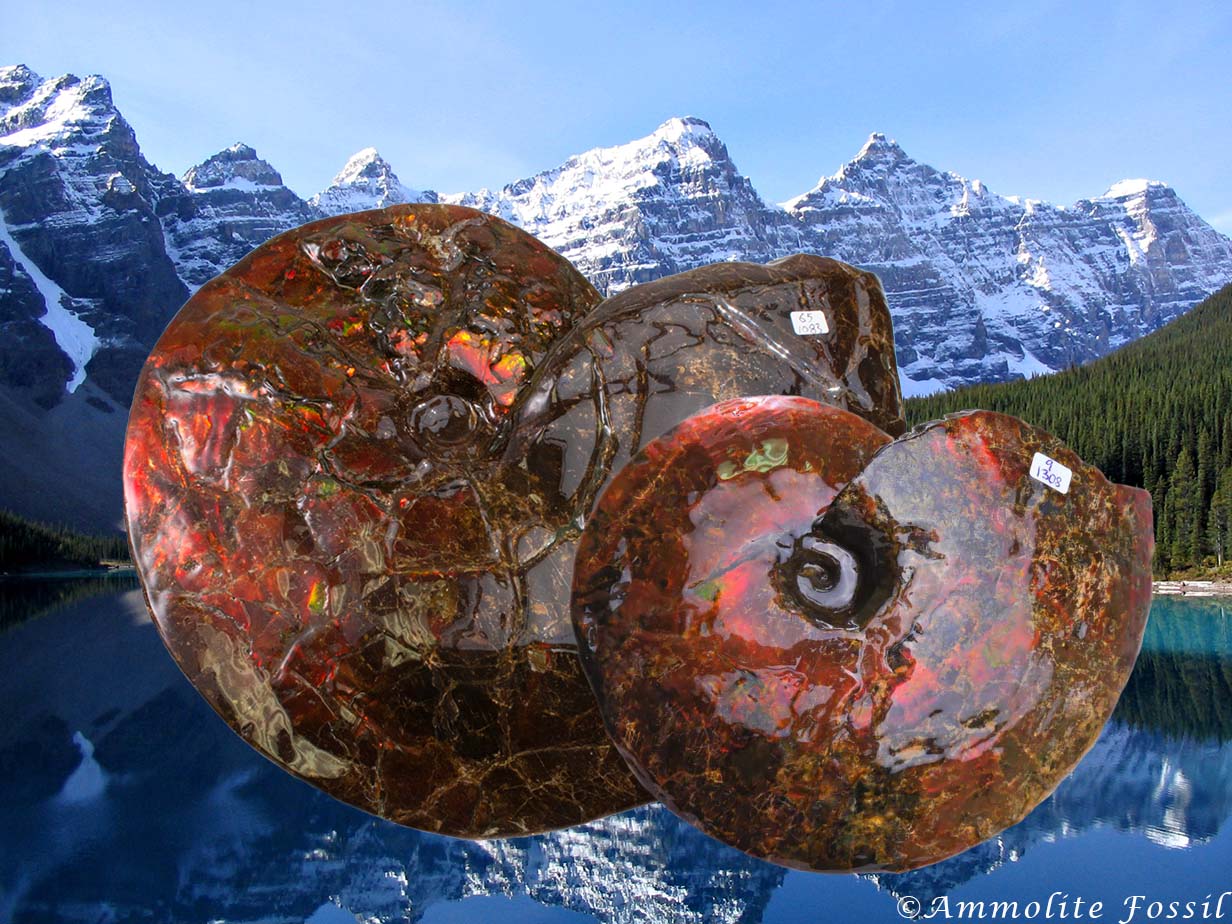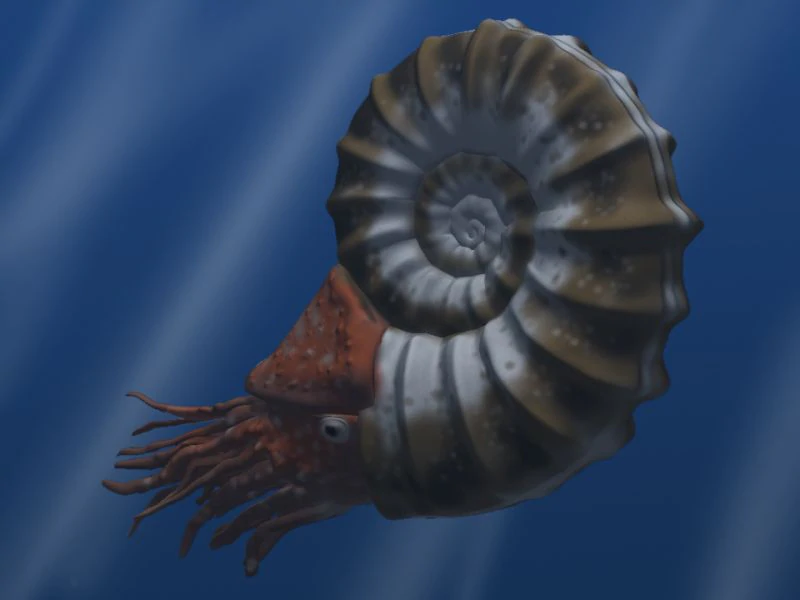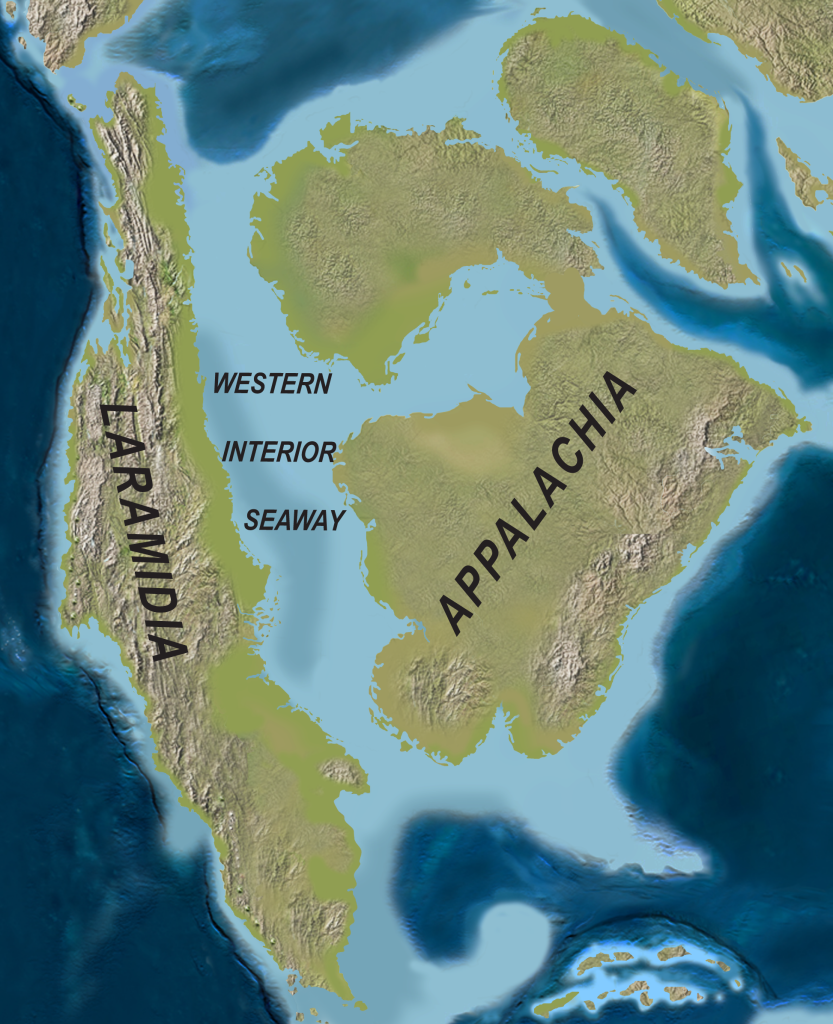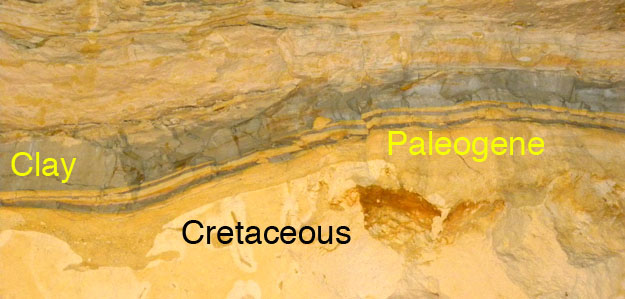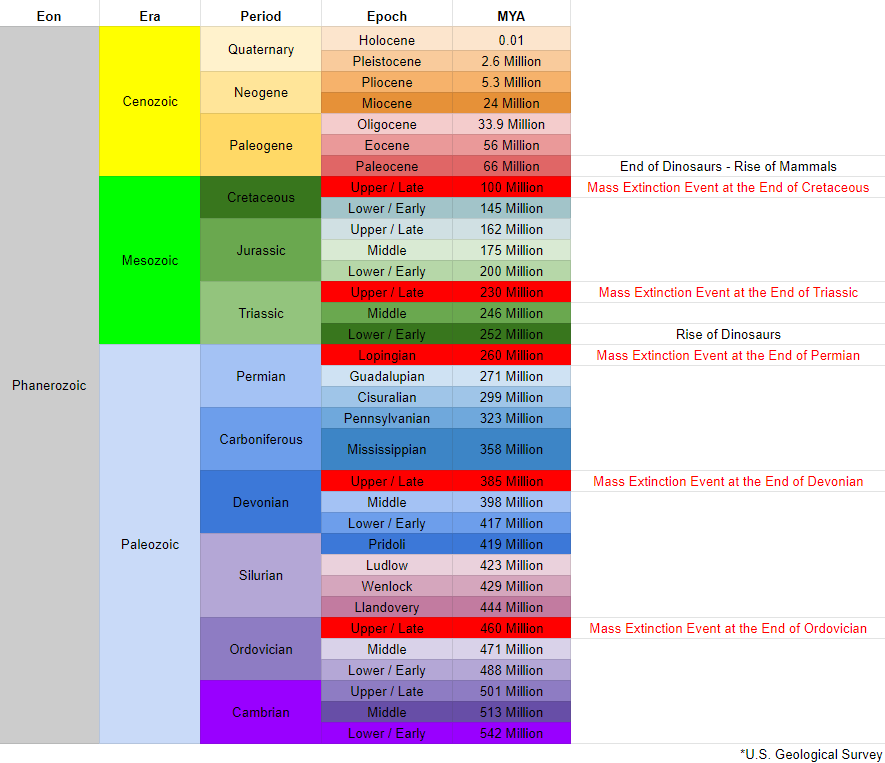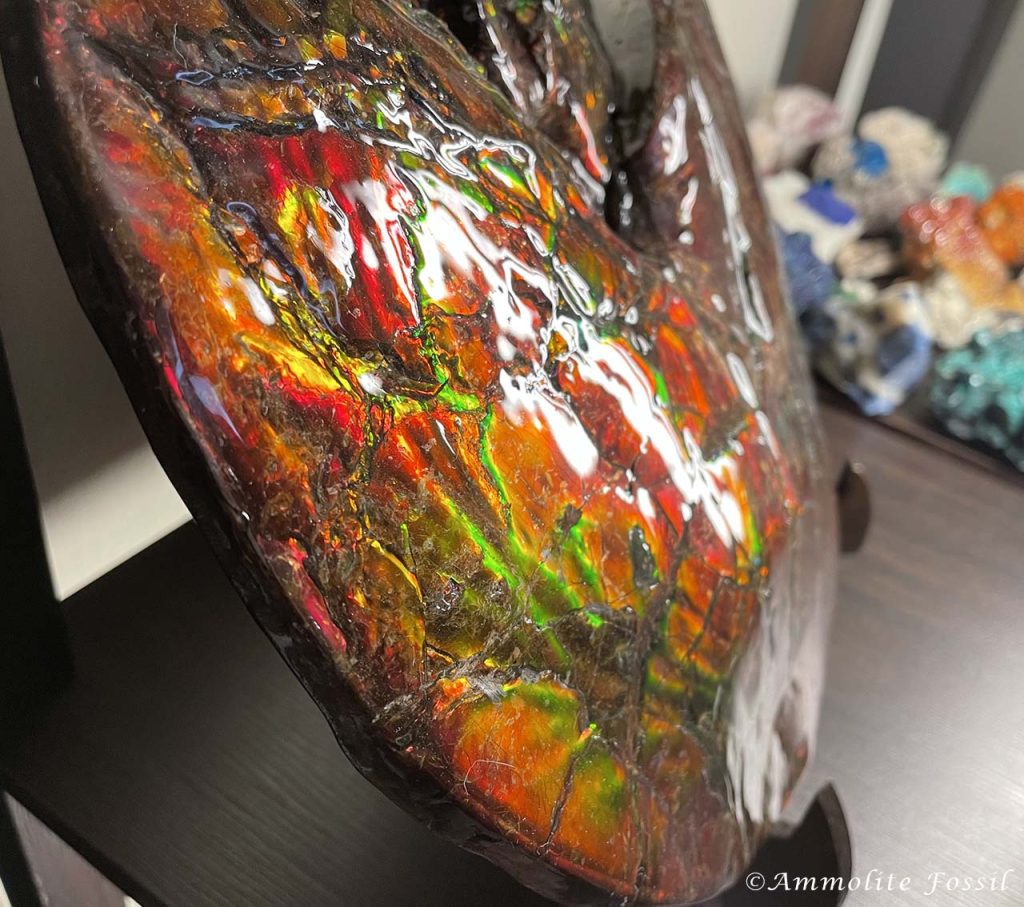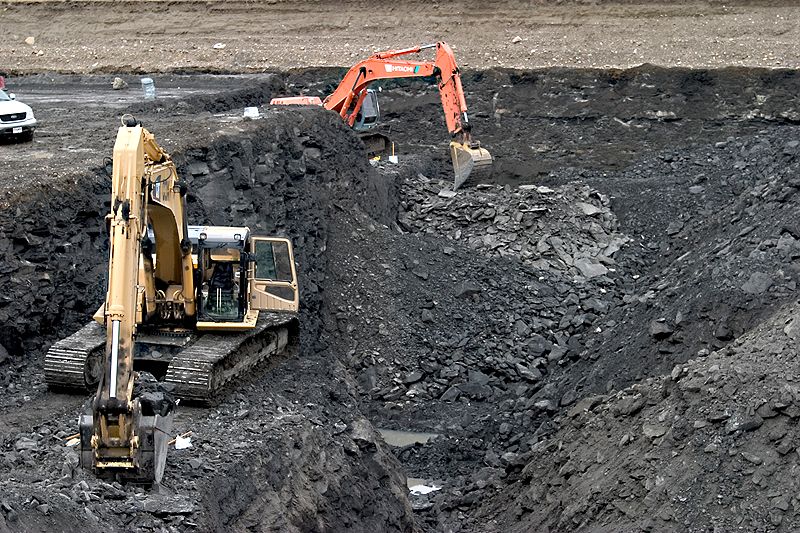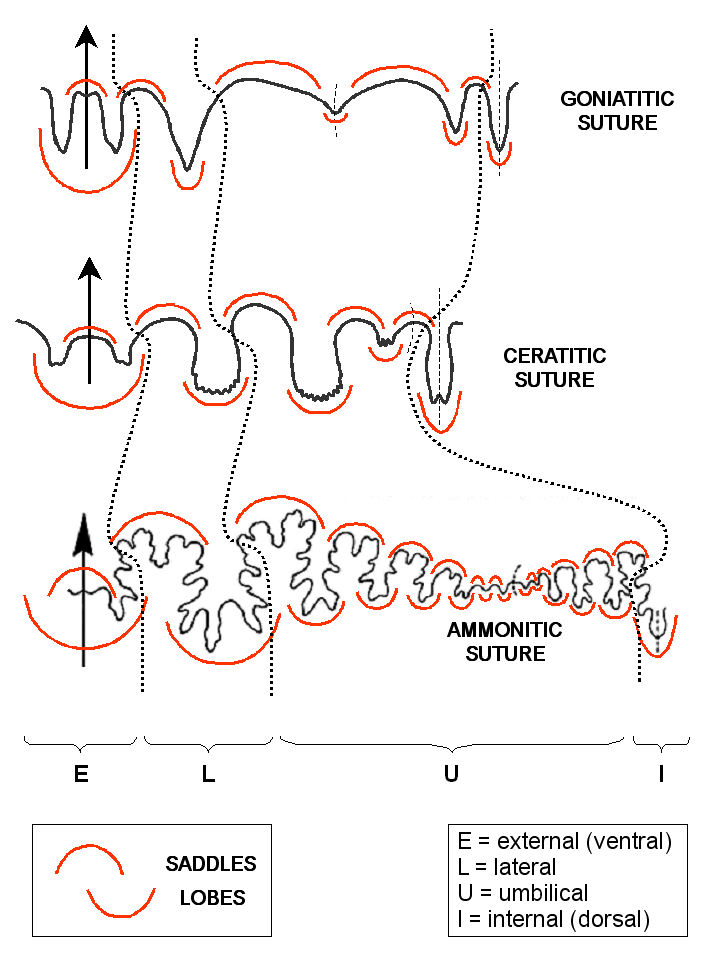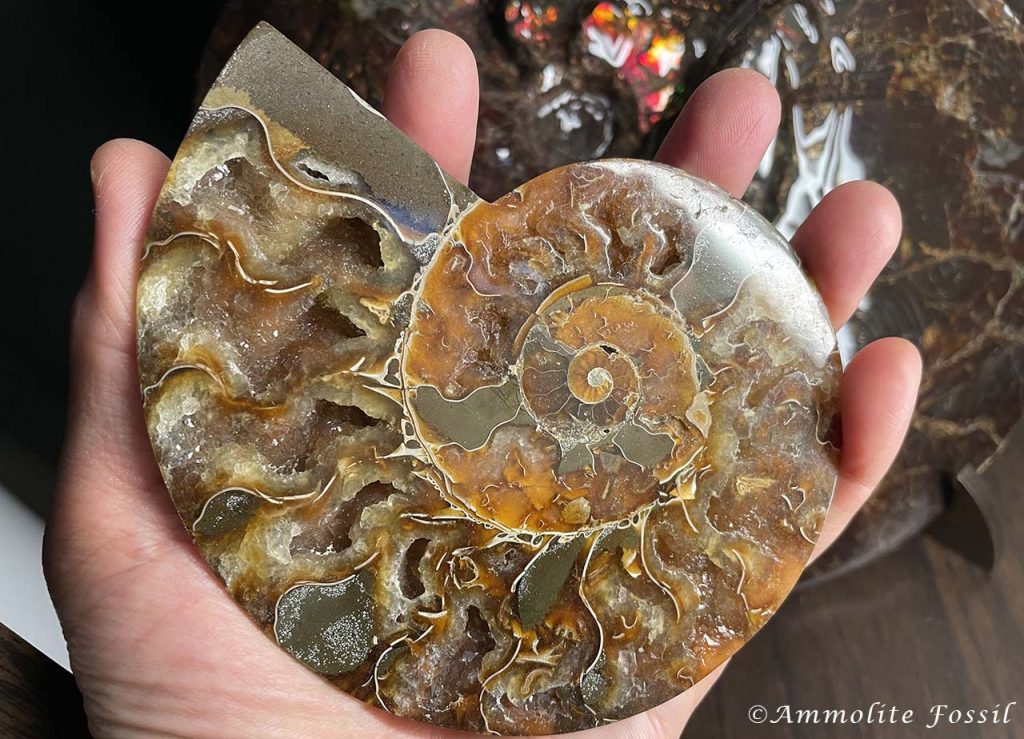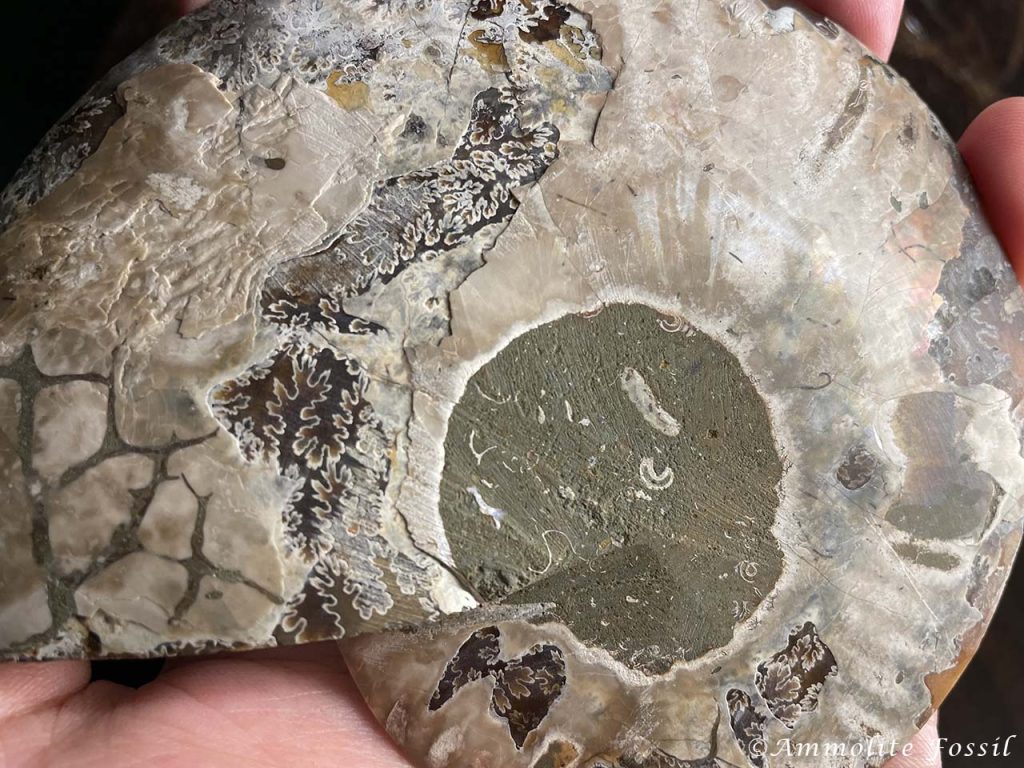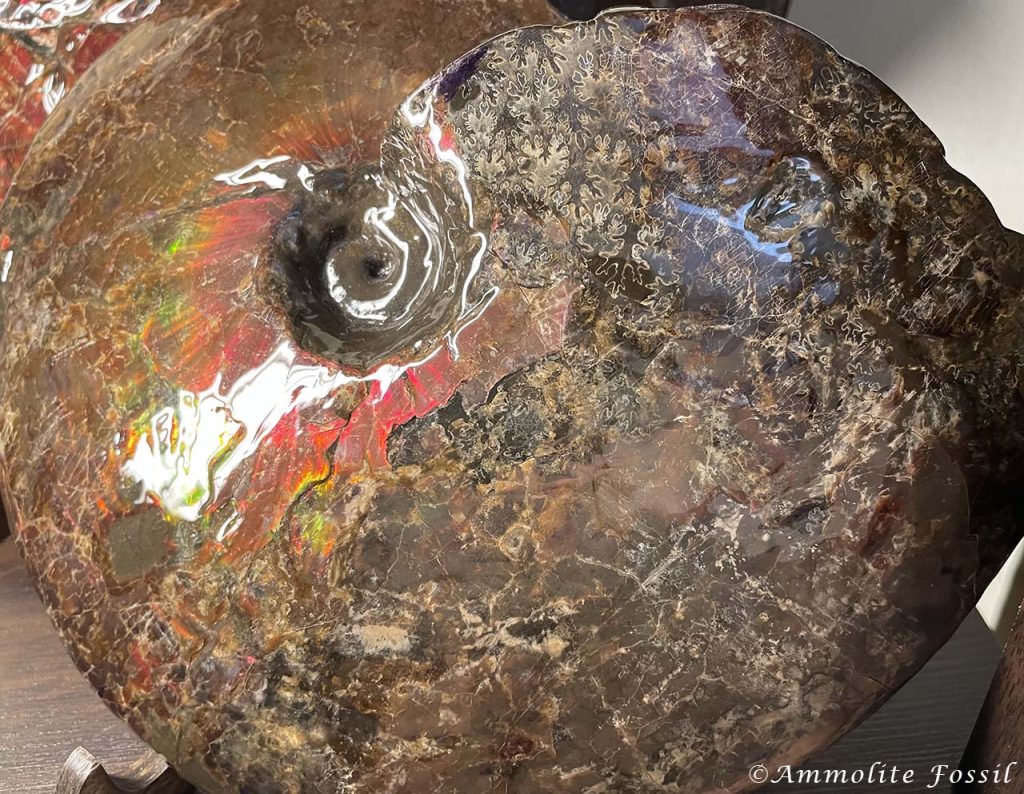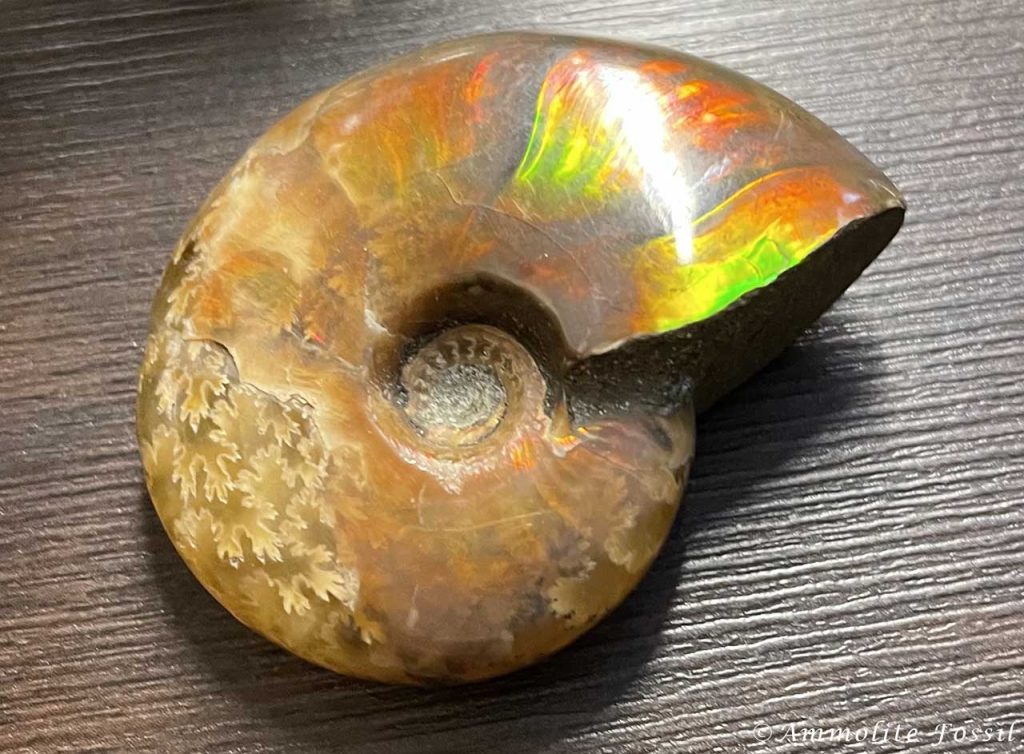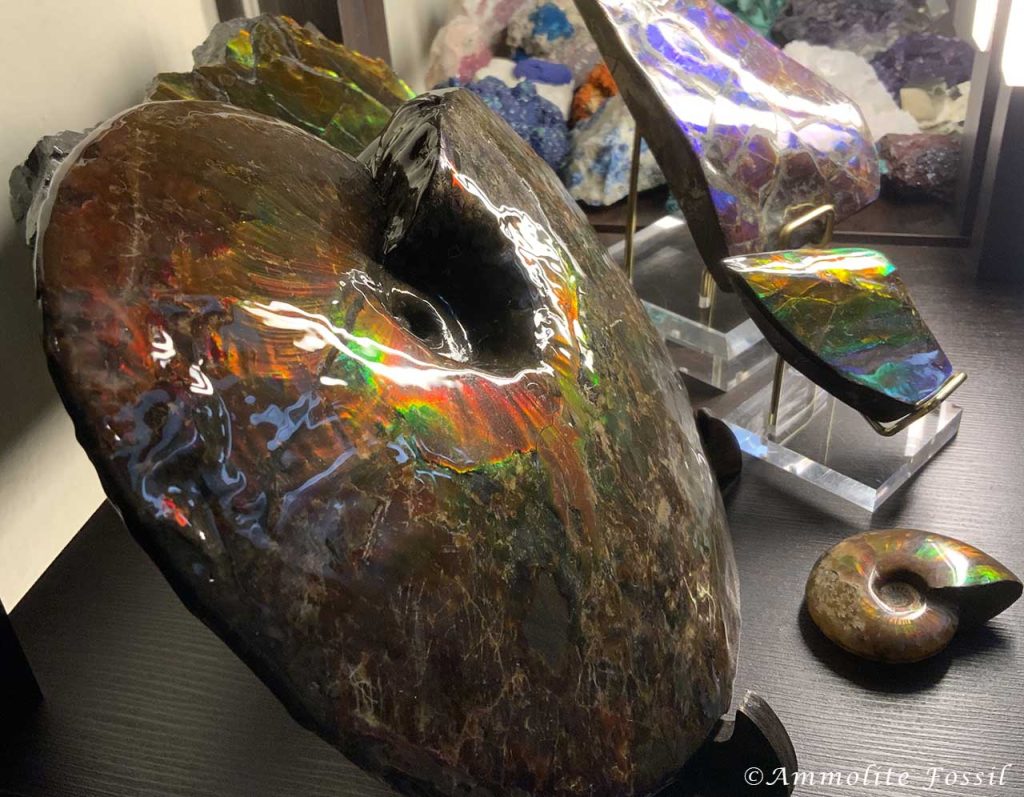Looking to start your own ammolite collection? Here are some ammolite buying tips to help you make informed purchase decisions. Ammolite has dazzled the world since its introduction as an official gemstone in 1981. This biogenic gemstone quickly became a collector’s favorite. Whether you’re buying a beautiful iridescent Canadian ammonite fossil specimen, or adding that eye-catching jewelry with splendid color play to your collection. Our ammolite buying tips will help you pick out the most suitable ammolite jewelry & ammonite fossils tailored just for you.
Ammolite Buying Tips – Color Play
One of the most fascinating aspects of ammolite gemstones is their opal-like color play. When purchasing ammolite, look for a chromatic shift of colors. Real genuine ammolite gemstones will display changing colors depending on the viewing angles, known as the play of color. Ammolite’s colors come from light interference that rebounds from stacked layers of aragonite. Some color shifts are more subtle, such as reds displaying different hues of red. This is called monochromatic shift.
Higher quality ammolite gemstones however, will display dichromatic or spectro-chromatic shifts. Dichromatic will shift one color into another, such as red to green. Spectro-chromatic shift will display a wide array of colors. Rare ammolite gemstones will display hidden colors and patterns that only show up from specific angles. Imagine wearing a piece of ammolite jewelry, and as people walk by, they catch dazzling explosions of colors from your ammolite. This breathtaking play of color is rare in gemstones, and highly valued by ammolite collectors.
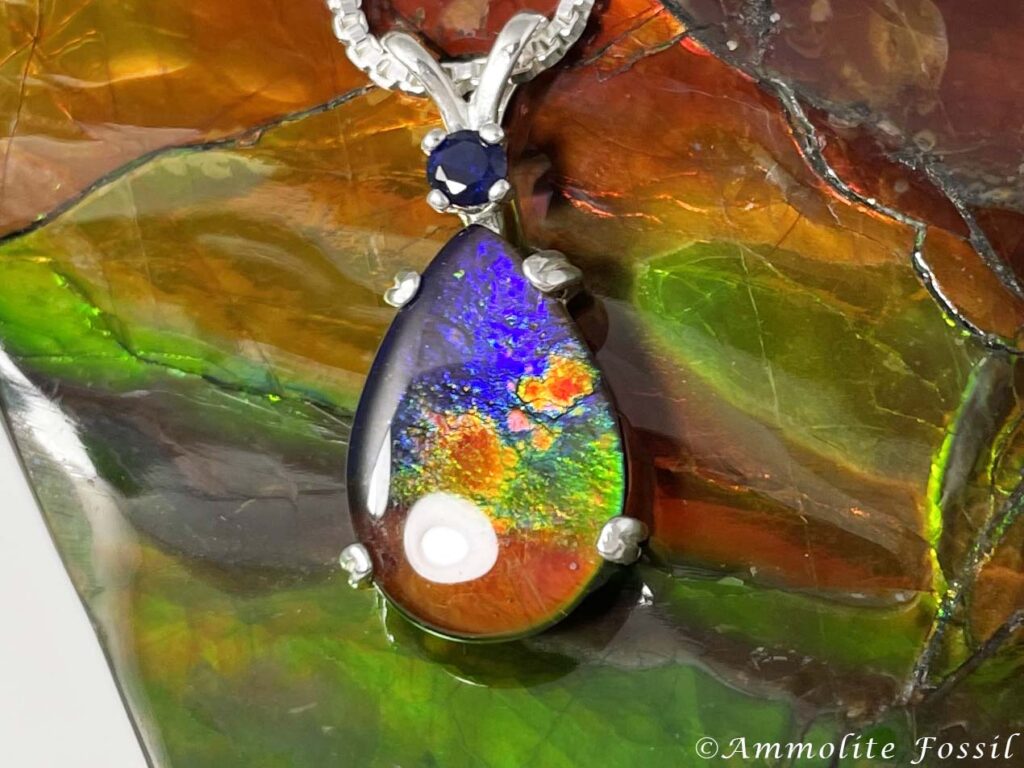
Ammolite Buying Tips – Buy From Reputable Sellers
Avoid bargain shopping on websites like Ebay. There are ammolite fakes made from polymer clay and labradorite. If you are unfamiliar with ammolite, you may not be able to tell the difference. The ammolite fakes have gotten quite convincing, but they do lack the brilliant iridescence and good color play of genuine ammolite. Judging sellers based on their reviews is also unreliable. Reviews can be faked and bought as we’ve seen from Amazon and Ebay.
Quality ammolite gemstones hold their values very well. High quality ammolite gemstones and jewelry should cost quite a bit because they are rare. If the prices look too good to be true, then it likely is. Korite is the largest miner of Canadian ammonite fossils. They produce 90% of the world’s supply of ammolite, and out of those, only 50% are gemstone quality. The top grade AA and AAA quality ammolite account for only 3% – 12% of Korite’s annual production.
Korite designs and produces some of the highest quality ammolite jewelry in the world. If you are shopping for a Canadian ammonite, Korite has museum quality ammonite fossils for sale as well. Use our referral code to get 15% off on all purchases from Korite. This Korite coupon code works for all items, including jewelry and ammonite fossils on sale. Take 15% off already low priced on sale items.
Ammolite Buying Tips – Rotational Range
The rotational range of ammolite means how much you can rotate the gemstone while still seeing colors. While looking for ammolite’s play of color, see if there are blind spots where colors fade away. Always ask to see pictures from different angles. If possible, a video will allow you to see both the color play and rotational range of an ammolite gemstone.
Not all ammolite gemstones and jewelry will have a good rotational range. It’s perfectly fine to purchase an ammolite without a good rotational range of colors, but the prices should reflect properly. Ammolite gemstones with good rotational range are valued higher, so it should cost more. When spending higher prices on an ammolite jewelry or gemstone, be sure the rotational range is good.
Ammolite Buying Tips – Rare Colors
The colors red and green are the most common in ammolite gemstones. Contrast that to opals, while red is the most rare and valuable in opals, there is no shortage of red in ammolite. Colors amber and orange are also fairly common, while colors blue and purple are considered rare colors in ammolite gemstones. There are certain hues derived from primary colors; crimson, golden yellow, violet, turquoise, and pink. These are precious collector-grade colors. When picking out your ammolite, be sure to rotate the gemstone to see if you can catch a glimpse of these rare colors.
Ammolite Buying Tips – Brightness of Colors
The iridescence and luster make a big difference in jewelry. While brightness of colors do not matter as much in an ammolite hand-held specimen, since you likely have perfect lighting setup for it. You want the jewelry you wear to pop. Some rare colors like blue and violet are naturally darker. When looking at a piece of ammolite jewelry, try to find a balance so the bright colors balance out the darker, more rare colors.
If the ammolite gemstone is covered by mostly darker colors, then it would be harder to see the jewelry piece unless a light is shining directly on it. The colors of your ammolite jewelry should gleam and catch your eyes even from far away. With proper bright & dark color balance, the ammolite jewelry piece should still stand out.
Ammolite Buying Tips – Number of Colors
The number of colors in an ammolite gemstone determines its grade. In a Standard Grade ammolite gemstone, you can expect to see 1-2 primary colors. An A Grade ammolite gemstone should contain 2+ bright colors. The AA and AAA Grade ammolite gemstones should display 3+ extra bright colors. As you examine an ammolite gemstone, take note of the number of colors and how bright they are. Then rotate it to see its color play, rotational range of colors, and see if you can spot flashes of rare violet, turquoise, crimson, and pink.
Ammolite Buying Tips – Impurities, Matrix Lines, and Horns
Ammolite is a biogenic gemstone made from fossilized shells of ammonites. Canadian ammonites are prehistoric mollusks that lived in the seas 70+ million years ago. Impurities such as pyrite inclusions, suture patterns, horns, and matrix lines are natural beauties of ammolite. For polished cabochons, hand-held specimens, and freeform necklaces, these impurities add character and historical value to the ammolite gemstones. Horns in particular are extremely rare. They are thought to exist only on shells of one particular ammonite species, the Placenticeras intercalare. Certain suture patterns give off a fiery effect, making an ammolite gemstone look like it is on fire. Some growth lines will show off a wave effect
When it comes to fine ammolite jewelry, the higher the grade, the less impurities and matrix lines present. You can see fine matrix lines in AA grade ammolite gemstones. However they should not be overpowering or interfere with the ammolite’s iridescence. In general you should look for little to no impurities in high grade gold and silver rings and pendants. Unless the impurities enhance the gemstone, such is the case with patterns that give off a fiery effect. The bottom line is, if an ammolite gemstone speaks to you, then it’s the right one. No two ammolite gemstones are alike. What you purchase will always be unique to you.
Ammolite Buying Tips – Diamond, Sapphire, and Topaz Accents
While ammolite jewelry is beautiful on its own, many jewelers opt to incorporate accents to accentuate and complement the ammolite gemstones. Most common are diamond, sapphire, and topaz accents. These gemstones are used because they are hardy; diamond scores a 10 on Mohs scale, sapphire a 9, while topaz scores 8 on Mohs scale of mineral hardness. This means diamond, sapphire, and topaz can not be scratched by steel knives and glass. They are even harder than quartz, which scores 7 on Mohs scale. The luster and hardiness of diamond, sapphire, and topaz make them popular accents for ammolite jewelry.
Light will bounce off the diamond, sapphire, and topaz accents, making your ammolite jewelry sparkle. These gemstones complement the brilliant iridescence of ammolite perfectly. Get your own high quality ammolite jewelry with accent from Korite, the largest producer of gemstone quality ammolite and ammonite fossils. Use this coupon code to get 15% off. This coupon can be applied to on sale items.
